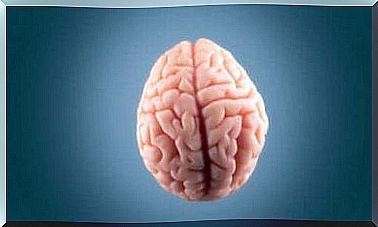What Does The Neuroscience Of Happiness Tell Us?

The past few years have surfaced several studies the neuroscience of happiness. Learn all about it in this article! In fact, neuroscientists and psychologists are investigating the brain states associated with happiness. Scientists are also investigating the link between the brain and well-being.
For years, research has shown that our experiences reshape our brains. In addition, they can also alter the nervous system.
Currently, researchers in the neuroscience of happiness are focusing on how we can take advantage of brain plasticity. Above all, they want to discover how we can develop and maintain positive emotions.
Positive emotions are the key to psychological well-being
The ability to maintain positive emotions is a key element of psychological well-being. There is a lot of documentation about the benefits of positive emotions.
For example, studies have shown that positive emotions can improve physical health. In addition, they can develop trust and compassion. They can also compensate and/or alleviate depressive symptoms.
Scientists have also found that positive emotions help people recover from stress. In addition, they can even counteract the effects of negative emotions. As a result, positive emotions promote better social bonding.
The inability to retain positive emotions over time is a hallmark of depression and other forms of psychopathology. Until recently, however, we had very little understanding of the mechanisms that allow us to sustain positive emotional responses.

Exploring the neuroscience of happiness
A study was published in The Journal of Neuroscience in July 2015 . This study had found that prolonged activation of the ventral striatum, a region of the brain, is directly related to the maintenance of positive emotions and rewards.
The good news is that we can control the activation of the ventral striatum. In other words, this means that we are in control of experiencing positive emotions.
The findings of the neuroscience of happiness
What happens in people whose sustained activity level of the ventral striatum is higher? According to the mentioned study, these people show greater psychological well-being and lower cortisol levels.
The researchers in a previous study found that enjoying things like a beautiful sunset and the positive emotions that accompany it can help improve well-being. They also wanted to determine how and why some people are able to maintain positive feelings.
Identifying a specific brain region associated with the retention of positive emotions has tremendous benefits. For example, it makes it easier to visualize what could be a push button that allows us to activate this brain region in a conscious way.
In this new study, researchers have dissected the neuroscience of happiness. This science examines the preservation of positive emotions. To do this, they conducted two experiments in humans. First they set up a task in which answers were rewarded.
A functional magnetic resonance device recorded the results. The second experiment consisted of a sampling task. Here, emotional responses were measured when receiving a reward. These experiments accurately predicted the duration of positive emotional responses in the real world.
The duration of the positive emotions is important
By examining these dynamics, we can better understand the behavioral connections of the brain. In this regard, we should also note that what many authors mention about this. After all, it is important that you not only look at how much emotion you experience, but also how long these emotions last.
However, the exact mechanism that creates emotional moments in the brain in terms of seconds, minutes and hours still remains a mystery.
However, researchers say these findings suggest that the duration of activity in specific brain circuits, even during relatively short periods of time, can predict how long a person’s positive emotions will last just minutes or hours later.

The activation of the ventral stratium
The results of this study contribute to a better understanding of how mental disorders such as depression are expressed in the brain. The findings may also help explain why some people are more cynical than others. On the other hand, it can also explain why some people often see the glass as half full.
The author of the study also mentions the neural pattern they observed especially in the ventral striatum. Other studies have also found that this pattern predicts higher levels of well-being.
According to them, kindness and compassion towards others can help to increase a person’s ability to enjoy positive emotions. The purpose of being kind and compassionate is also to develop certain forms of positive emotions.
On the other hand, the authors also say that the methodological innovations in this study can be further applied. We can use them to see whether the influence of simple forms of meditation can improve retained positive emotions in real world contexts.
Does the preserved activation of the ventral striatum that we measured using technological brain imaging also have an effect in the real world? In any case, they may help develop our understanding of the neuroscience of happiness.









